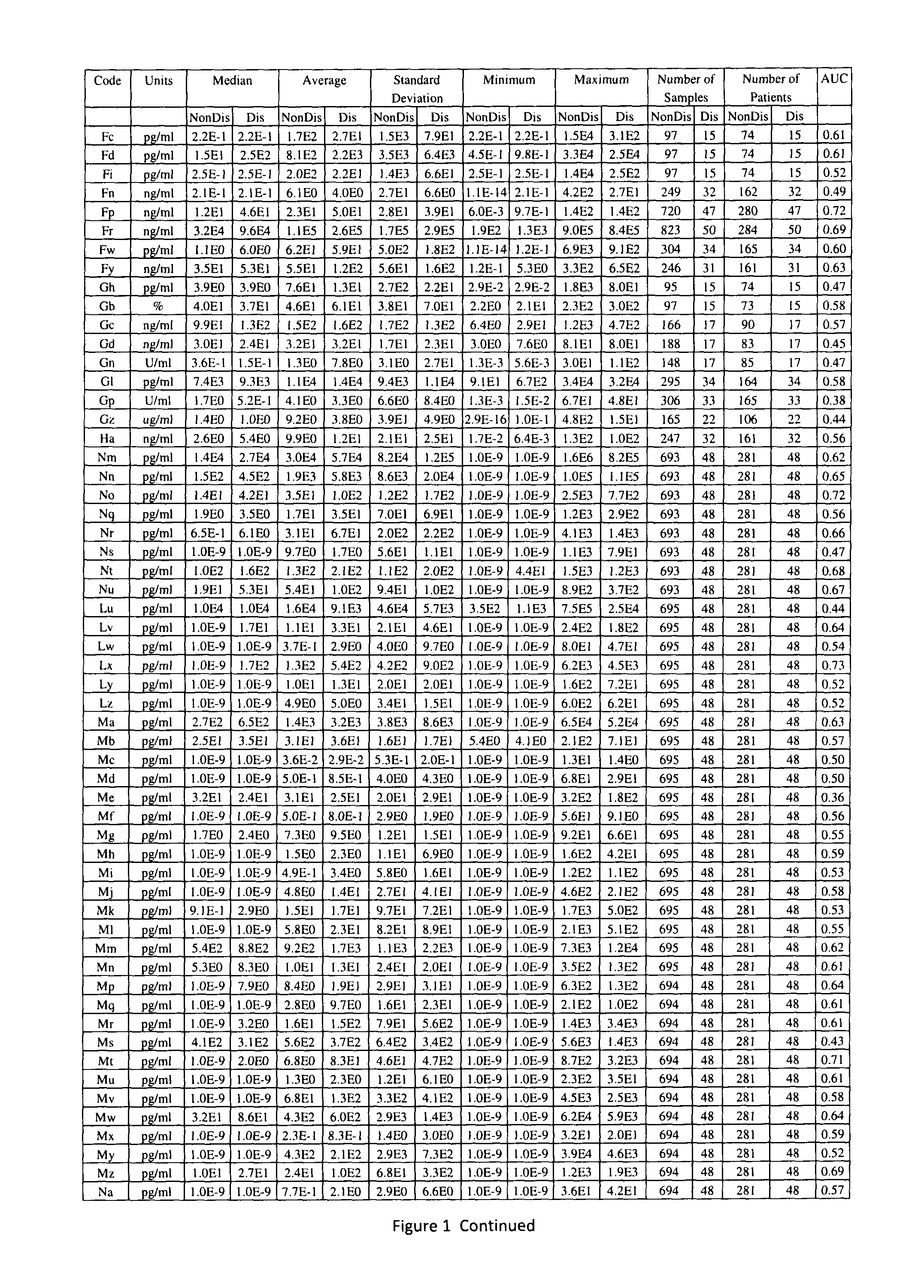Methods and compositions for diagnosis and prognosis of renal injury and renal failure
a technology of renal injury and prognosis, applied in the field of methods and compositions for diagnosis and can solve the problems of reducing urine output, affecting the prognosis of renal injury and renal failure,
- Summary
- Abstract
- Description
- Claims
- Application Information
AI Technical Summary
Benefits of technology
Problems solved by technology
Method used
Image
Examples
example 1
Contrast-Induced Nephropathy Sample Collection
[0159]The objective of this sample collection study is to collect samples of plasma and urine and clinical data from patients before and after receiving intravascular contrast media. Approximately 250 adults undergoing radiographic / angiographic procedures involving intravascular administration of iodinated contrast media are enrolled. To be enrolled in the study, each patient must meet all of the following inclusion criteria and none of the following exclusion criteria:
Inclusion Criteria
males and females 18 years of age or older;
undergoing a radiographic / angiographic procedure (such as a CT scan or coronary intervention) involving the intravascular administration of contrast media;
expected to be hospitalized for at least 48 hours after contrast administration.
able and willing to provide written informed consent for study participation and to comply with all study procedures.
Exclusion Criteria
renal transplant recipients;
acutely worsening ...
example 2
Cardiac Surgery Sample Collection
[0163]The objective of this sample collection study is to collect samples of plasma and urine and clinical data from patients before and after undergoing cardiovascular surgery, a procedure known to be potentially damaging to kidney function. Approximately 900 adults undergoing such surgery are enrolled. To be enrolled in the study, each patient must meet all of the following inclusion criteria and none of the following exclusion criteria:
Inclusion Criteria
males and females 18 years of age or older;
undergoing cardiovascular surgery;
Toronto / Ottawa Predictive Risk Index for Renal Replacement risk score of at least 2 (Wijeysundera et al., JAMA 297: 1801-9, 2007); and
able and willing to provide written informed consent for study participation and to comply with all study procedures.
Exclusion Criteria
known pregnancy;
previous renal transplantation;
acutely worsening renal function prior to enrollment (e.g., any category of RIFLE criteria);
already receiving ...
example 3
Acutely Ill Subject Sample Collection
[0165]The objective of this study is to collect samples from acutely ill patients. Approximately 900 adults expected to be in the ICU for at least 48 hours will be enrolled. To be enrolled in the study, each patient must meet all of the following inclusion criteria and none of the following exclusion criteria:
Inclusion Criteria
males and females 18 years of age or older;
Study population 1: approximately 300 patients that have at least one of:
shock (SBP 60 mmHg and / or documented drop in SBP of at least 40 mmHg); and
Study population 2: approximately 300 patients that have at least one of:
IV antibiotics ordered in computerized physician order entry (CPOE) within 24 hours of enrollment;
contrast media exposure within 24 hours of enrollment;
increased Intra-Abdominal Pressure with acute decompensated heart failure; and
severe trauma as the primary reason for ICU admission and likely to be hospitalized in the ICU for 48 hours after enrollment;
Study ...
PUM
| Property | Measurement | Unit |
|---|---|---|
| time | aaaaa | aaaaa |
| time | aaaaa | aaaaa |
| time | aaaaa | aaaaa |
Abstract
Description
Claims
Application Information
 Login to View More
Login to View More - R&D
- Intellectual Property
- Life Sciences
- Materials
- Tech Scout
- Unparalleled Data Quality
- Higher Quality Content
- 60% Fewer Hallucinations
Browse by: Latest US Patents, China's latest patents, Technical Efficacy Thesaurus, Application Domain, Technology Topic, Popular Technical Reports.
© 2025 PatSnap. All rights reserved.Legal|Privacy policy|Modern Slavery Act Transparency Statement|Sitemap|About US| Contact US: help@patsnap.com



